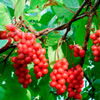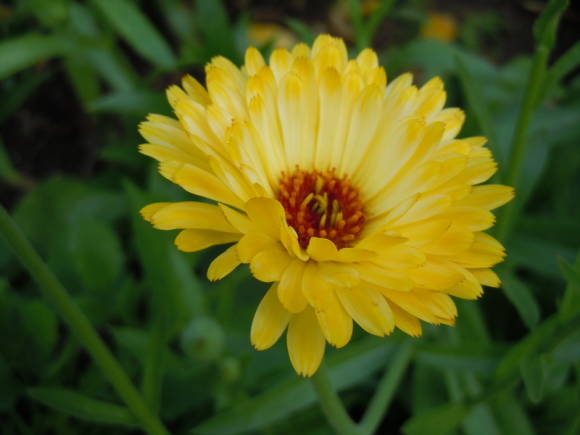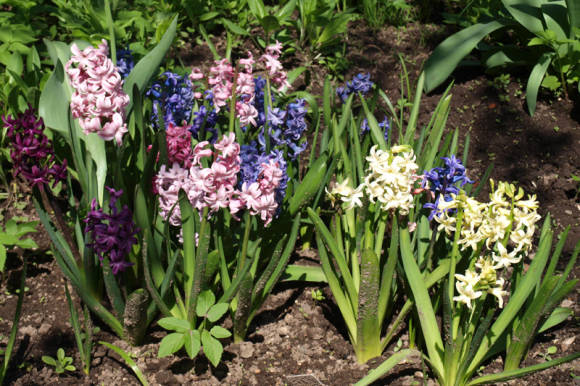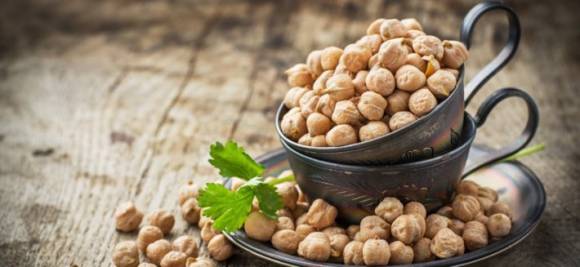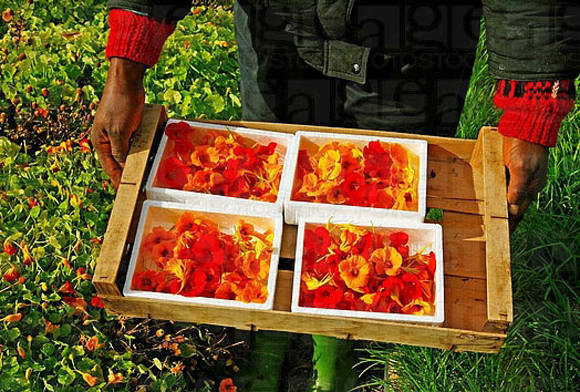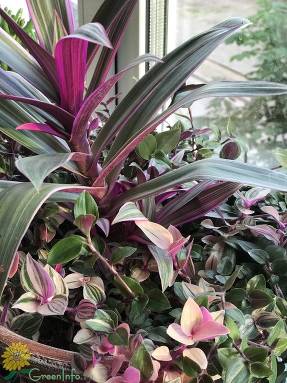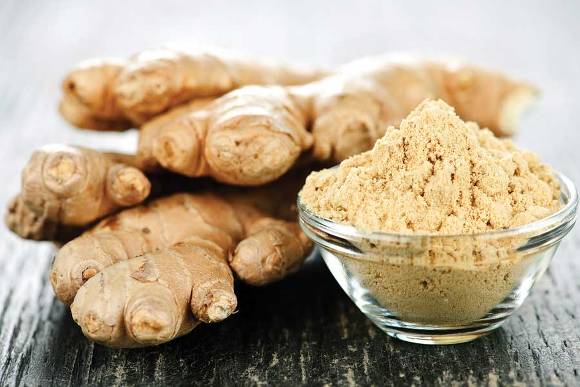 |
The medicinal raw material of this plant is often marketed under the name lemon balm. And its names in European languages are translated as Turkish lemon balm. But the Latin name Dracocephalum literally translates as "dragon's head" and very accurately reflects the shape of the corolla of the flower. Recently, this plant has received a residence permit in personal plots as a spice and flavoring plant. But its value is not only and not so much in a salad or a jar of cucumbers. Although this is also important.
Large and colorful family
Genus Snakehead (Dracocephalum) was described by K. Linnaeus (1737-1753) as a result of the unification of the clans Dracocephalon and Moldavis... In total, he described 12 species of the genus, which, according to the shape of the inflorescence, was divided into two groups (Spicata and Verticillata). Further, F. Muller (1754) and (1805) and, finally, G. Bentham (1832-1836, 1884), whose system was used until the end of the 19th century, was engaged in the taxonomy of the genus.
In "Flora of the USSR" (1954) BK Shishkin's classification is given and 35 species of this genus, found on the territory of the USSR, are described. The generally accepted genus system does not currently exist; the scope of species is understood differently by different authors.
One of the last, most complete systems of the Snakehead genus, was developed in our country by A.L. Budantsev (1987). According to his system, the genus has about 70 species. All species are included in 3 subgenera, 7 sections, 2 subsections.
Snakeheads are usually perennial, rarely annual grasses, sometimes woody below, with an underdeveloped taproot. Perennial species form rhizomes with renewal buds. On erect flowering stems are usually narrow, oblong-ovate leaves with a crenate edge.
The range of the genus Snakehead occupies most of Eurasia and North America and covers cold-temperate, temperate and warm-temperate zones, reaching in some areas of the subtropics. In the flora of North America, 2 species are mentioned. One of them - small-flowered snakehead (Dracocephalum parviflorum Nutt) - Found only in North America.
The greatest species diversity on our continent is found in Central Asia (more than 20 species), in Western and Eastern Siberia (more than 15 species). Most of the species are confined to mountainous regions. They are found on sandy and stony slopes, coastal gravels, alpine meadows, less often in bushes.
However, despite the fact that many species are used in folk medicine, only the Moldavian snakehead is widespread. Here we will talk about him.
Snakehead moldavian
According to the last taxonomic system of the genus, developed by Budantsev A.L. (1987), the Moldavian snakehead belongs to the subgenus Dracocephalum, section Dracocephalum OY. Ni et N. T. Wang., Subsection Stenodracontes (Briq.) Schischl. R.R., genus Dracocephalum, which also includes the one-year 3meghead smelly(Dracocephalum foetidum Bunge), which in the last century was considered as a type of Moldavian snakehead (D. moldavicum vаr... foetidum Palib.)
Snakehead moldavian (Dracocephalum moldavicum) - an annual herb 30-80 cm high with a thin taproot; stem erect, tetrahedral, branched from the base, with long branches directed obliquely upward, in forms with blue and purple flowers with anthocyanin coloration. Leaves are opposite, petiolate, oblong-ovate, with a blunt toothed edge and wedge-shaped base, dark green, 1.5-4.5 cm long, 0.7-2.0 cm wide.The flowers are collected in a racemose inflorescence, consisting of contiguous whorls with 5-6 flowers. The bracts have spinous teeth at the base, the calyx is two-lipped, short-hairy, 9-11 mm long, the corolla is white, bluish or lilac, two-lipped, 15-25 mm long, pubescent outside, 4 stamens, two of them with longer staminate filaments and protrude from the rim together with a column bearing a two-lobed stigma. The fruit, called erem, splits into 4 triangular, oblong nuts. Seeds are brown, almost black. Fruit length 2, 8-3.1 mm, width 1.5-1.8 mm. Weight 1000 pcs. seeds 1.9-2.1 g.
 |
As a wild, usually weedy, plant is found in the European part of Russia, mainly in the southern zone, in Ukraine, in Central Asia, in Western and Eastern Siberia, the Far East, Mongolia, China and even North America. The primary area of distribution, probably, should be considered still the Near East - Turkey, Iran, and the rest of the growing areas are secondary.
In the former USSR, the Moldavian snakehead was studied and grown mainly as an essential oil crop in the Crimea, Moldova, Siberia, the Volga region, since the 30s.
Some plant names: Moldavian dragonhead, Turkish lemon balm, French - la melisse de turque and Moldavian Balm, German - Melisse de Moldavien, English - Moldavian dragon's-head.
Delicate lemon scent
The raw material of the snakehead is the aboveground mass, cut during the period of mass flowering at a height of 10-15 cm from the soil surface. If you cut the raw material too low, then there are a large number of rough stems in it, from which there is no benefit, and it becomes less convenient to grind and brew the raw material.
Particular attention should be paid to the drying of raw materials. Before drying, it is better not to grind it too much in order to preserve the essential oil as much as possible. Raw materials are dried in the shade, in a well-ventilated area. Do not dry your snakehead in a hot dryer or oven. At high temperatures, the essential oil evaporates strongly, and the raw material loses most of its beneficial properties, and at the same time its wonderful aroma. The grass dries out 3.5-4.2 times during drying.
Essential oil of Moldavian snakehead is obtained by steam distillation. A perfumery assessment of the oil was carried out at some perfume factories, where the essential oil was rated at 4.0-4.5 points (out of 5 possible) and was recommended for the fragrance of certain types of soap and as a raw material for the perfumery industry.
In foreign countries, essential oil is considered as the main active ingredient, and its content according to German standards should be at least 0.1 ml per 100 g of dry raw materials. It has antiseptic, carminative and antispasmodic effects.
In some European countries (Romania, Hungary, Germany) it is grown as a medicinal plant, a substitute for lemon balm.
The content of essential oil in fresh raw materials is 0.25-0.58%. It is a light yellow, easily mobile liquid with a pronounced lemon aroma. The main components of the essential oil are geraniol, geranyl acetate and citral, which are monoterpenes. Their ratio changes depending on the phase of plant development. At the beginning of flowering, the proportion of geraniol is high. Subsequently, the content of citral and geranium acetate increases. At the end of flowering, the proportion of citral in the oil can reach 50-70%. Accordingly, the smell becomes more pungent. The chemical composition of the oil practically does not change during storage. The composition of the oil within the species is quite stable.
Oxygen-containing derivatives of monoterpenoids have high antimicrobial activity. The more phylogenetically advanced the structure of the hydrocarbon, the greater its biological activity. The most active components in snakehead essential oil are citral and geraniol, which, for example, exhibit high fungistatic activity against a number of phytopathogenic fungi - Тгichophyton rubrum and T. mentagraphyttes. Essential oils are more active against coccoid than rod-shaped microbes. The introduction of essential oils into a medium with a high protein content has little effect on the bactericidal activity. Microorganisms with prolonged contact with essential oils practically do not develop resistance to them.
The anti-inflammatory activity of essential oils consists of the sum of the biological action of individual fractions and is determined by antioxidant activity, the ability to stabilize lysosomal and cytoplasmic membranes, and actively influence vascular permeability. The use of essential oils as immunomodulators is considered promising. A number of tests revealed the antitumor activity of monoterpenes.
In addition, the snakehead has a pleasant smell and not only has a medicinal effect in the composition of teas, but also improves their taste.
In addition to essential oil, attention should be paid to flavonoid compounds - luteolin and apigenin derivatives, which exhibit diuretic, choleretic and antitoxic effects and reduce the content of glycogen in the blood. In Germany, standards have been developed for dry grass of Moldavian snakehead, methods for testing raw materials for authenticity.
Medicinal properties of the snakehead: like lemon balm, but not quite
 |
In folk medicine of different countries, the Moldavian snakehead is credited with a multifaceted therapeutic effect: sedative, analgesic, anticonvulsant, the property of stimulating appetite, strengthening the activity of the digestive organs. The herb infusion is used for heart palpitations, neuralgia, migraines, headache and toothache, aches, colds. Outwardly, the plant is used to heal festering wounds. In Indian medicine, the herb is used as an astringent and tonic. The seeds contain up to 20% fatty oil, consisting of unsaturated fatty acids.
As studies have shown, the Moldavian snakehead exhibits a calming, antispasmodic, adaptogenic, antiseptic, anti-inflammatory, estrogen-like effect, stimulates the activity of the adrenal cortex (this property is manifested mainly due to citral). The preparations of the plant have a beneficial effect on overwork and increased excitability, with dysfunction against the background of ovarian hypofunction and diseases associated with metabolic disorders.
As shown by experiments on animals, the use of Moldavian snakehead infusion accelerated the onset of ovulation in immature rats. These data confirm the prospects of using this plant for premenstrual syndrome, climacteric disorders in women. The combination of a sedative and some estrogenic effect is extremely beneficial.
Snakehead is used for the diseases listed above in the form infusion... For its preparation, 1 tablespoon of crushed raw materials is poured with a glass of boiling water, infused for 10-15 minutes and ½ cup is taken 3 times a day.
You can prepare a less concentrated infusion - 1 teaspoon of raw materials in a teapot and drink as tea after a meal or before bedtime.
A pharmacological study of the antispasmodic effect of essential oils on the trachea and longitudinal muscle was carried out in comparison with papaverine, the most active components were cis- and transcitral, therefore their use is promising in acute bronchitis and tracheobronchitis.
To do this, you can do inhalation: 2-4 tablespoons of dry raw materials are thrown into a saucepan, poured with boiling water and breathed over the steam for 8-10 minutes.
But remember that snakehead essential oil can cause allergies. Therefore, before using it in the form of inhalation, make sure that you tolerate this plant.
You can splash the snakehead infusion in the bath - the whole room will be enveloped in a stunning aroma.
The prospects of using the Moldavian snakehead in the treatment of urinary tract infections are noted.
In this case, the use of infusion for sitz baths is very effective. To prepare such a bath, take 150-200 g of dry raw materials, insist for 20 minutes in a bucket of boiling water, filter, cool to a temperature of 38-39 ° C, pour into a basin and take the appropriate procedure for 10-15 minutes.
Citral contained in essential oil suppresses the development of a number of pathogenic fungi and is active against tubercle bacillus, its beneficial effect in a number of inflammatory gynecological diseases has been noted. For female diseases, the infusion is used for douching or in the form of sitz baths.
A decoction from the aerial part of the snakehead has a beneficial effect on patients with pyelonephritis and gave good results in the experiment in the treatment of children.
To prepare the broth, take a tablespoon of dry raw materials, pour 1 glass of boiling water and simmer under a lid in an enamel bowl for 5 minutes, then cool, filter and take the resulting broth in 3 doses before meals.
The literature also mentions a certain immunomodulatory effect. However, this immunomodulatory effect is maximal when using raw materials cut during the budding period, before flowering. During this period, the content of essential oil is relatively low and, probably, this effect is due to other biologically active substances. The use of an infusion of such non-flowering raw materials in the form of tea will help the body to better cope with stress and recover from colds and infectious diseases. It should be noted that stimulation of the central nervous system and an increase in blood pressure, as when taking classical adaptogens from the Araliaceae family (ginseng, aralia), is not observed.
The snakehead can also be a cosmetic plant. For this it is worth preparing a wonderful massage oil. Put loosely dry raw snakehead in a jar, fill it with vegetable oil, preferably olive oil, and insist in a warm, dark place for 2-3 days, shaking the jar periodically. Then strain everything, squeeze out the remaining oil from the raw materials and pour a fresh portion of the snakehead with this fragrant oils. And so on up to 3 times. After that, you will have a wonderful scented oil that can be used for massage. It has a slight soothing and relaxing effect, will have a healing effect on neuralgia and prevent pustular formations on the skin.
But then again, make sure you are not allergic to this plant!
And in the salad and vodka
The snakehead herb collected during flowering can be added to fish broths, vegetable salads, meat dishes, and if you put a little in kvass, this will give it a uniquely pleasant sourness and an obscure lemon aroma.
A very interesting taste can be obtained by adding snakehead to pickles for cucumbers, zucchini and squash. By themselves, these vegetables are bland and they will always appreciate the addition of a variety of spicy-flavoring plants with gratitude. And they combine very harmoniously with the snakehead.
Cm. Fruit and honey cocktail with snakehead, Vinegar from snakehead and lavender, Drink with honey, snakehead and cranberry juice, Moldovan pies with cabbage (versere), Spicy vinegar from snakehead and shallots, Summer creamy fruit cocktail with snakehead.
The honey productivity of the snakehead is 200-300 kg / ha, and in some years it can reach 400-600 kg / ha. The honey is obtained with a slight lemon scent.
Lovers of spirits flavor vodka with this plant.
About growing a snakehead - in the article Snakehead: cultivation and varieties
